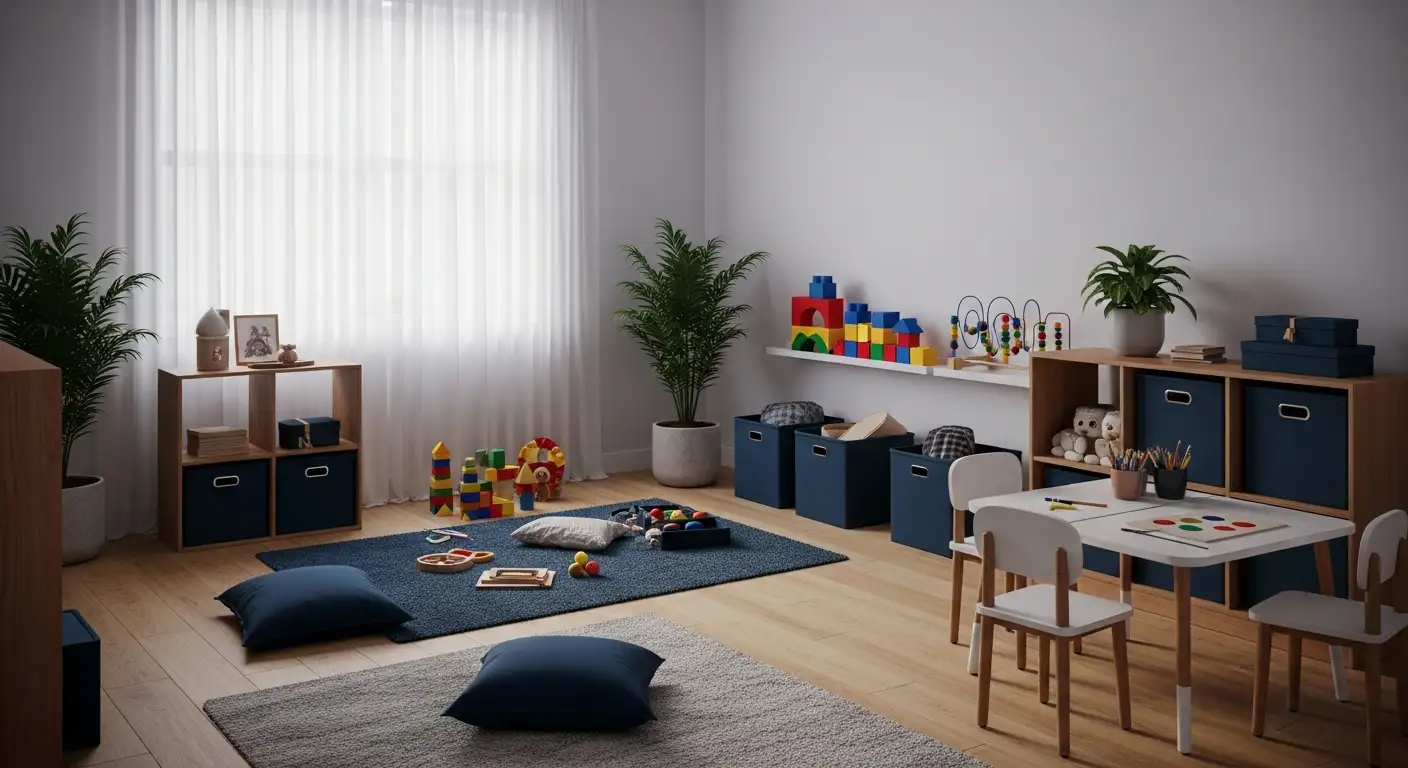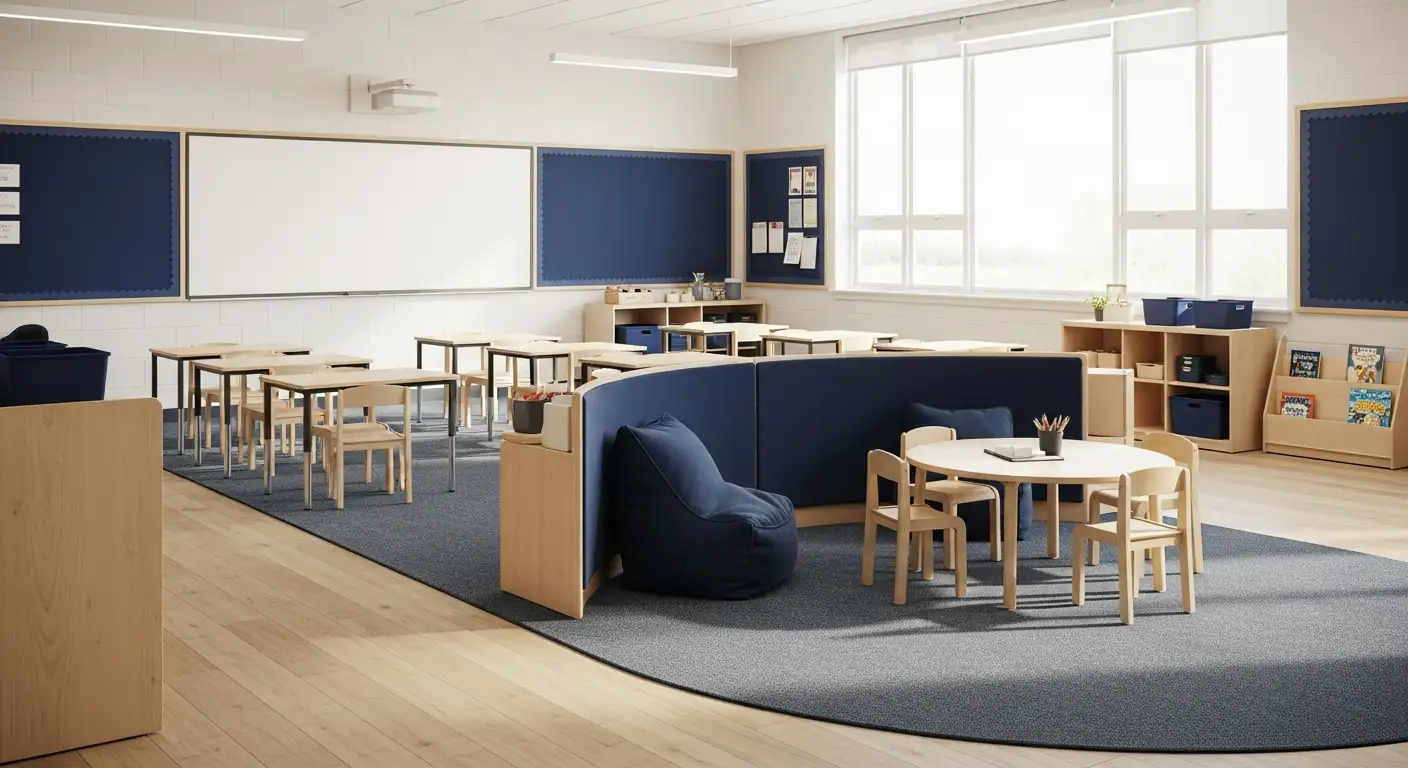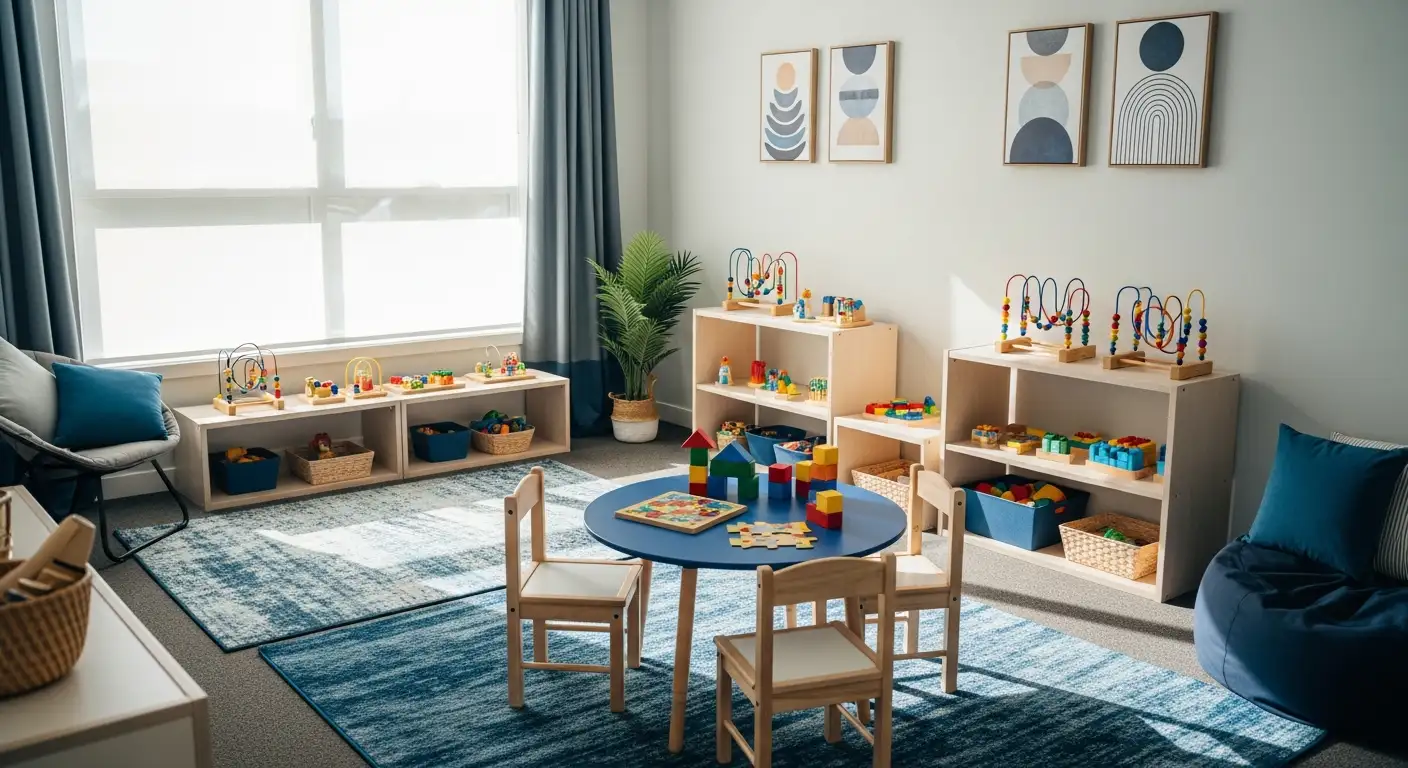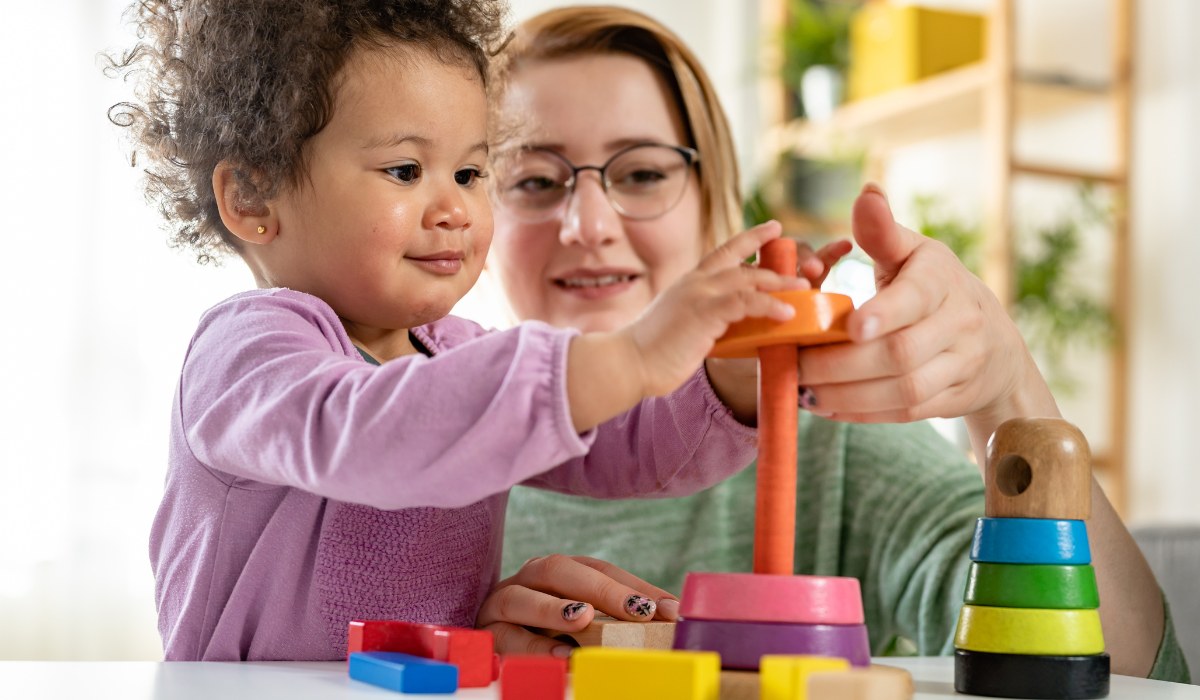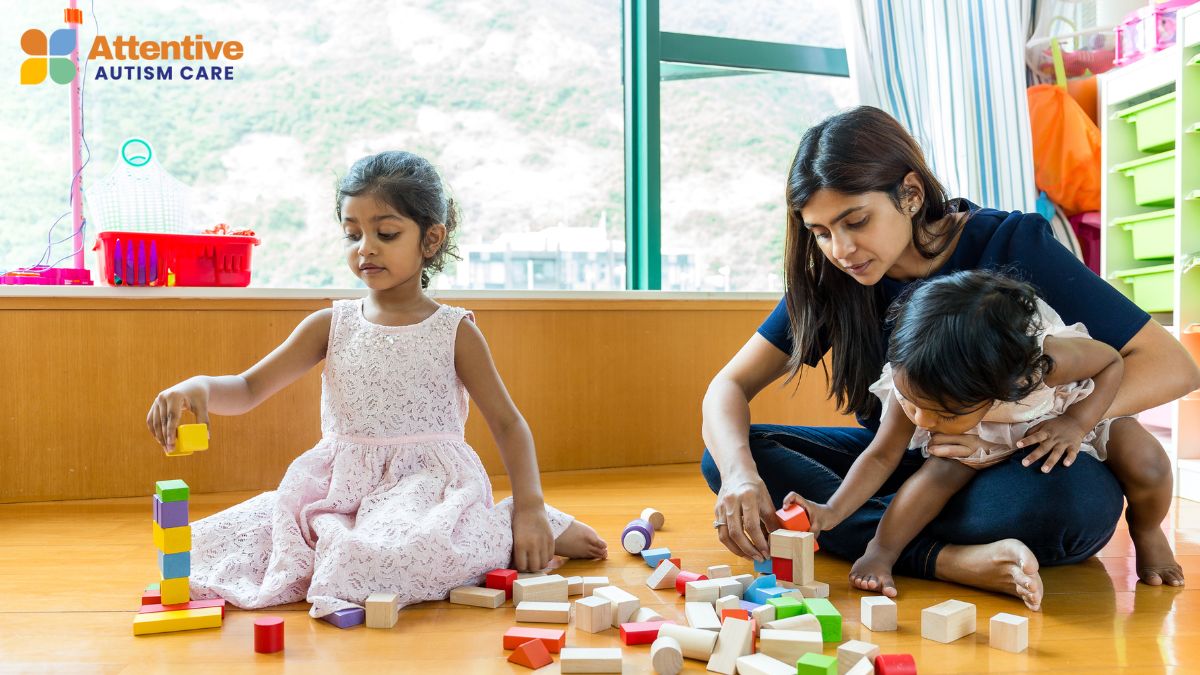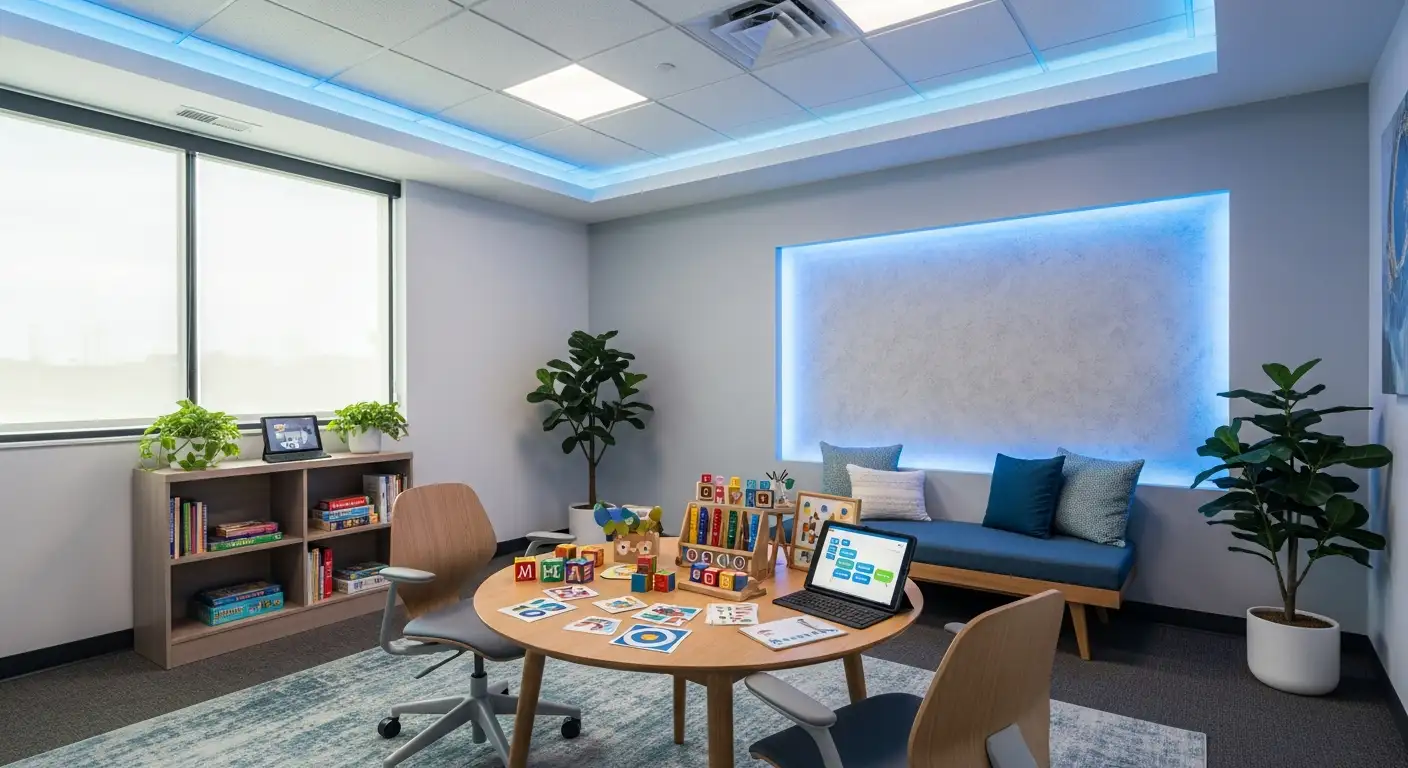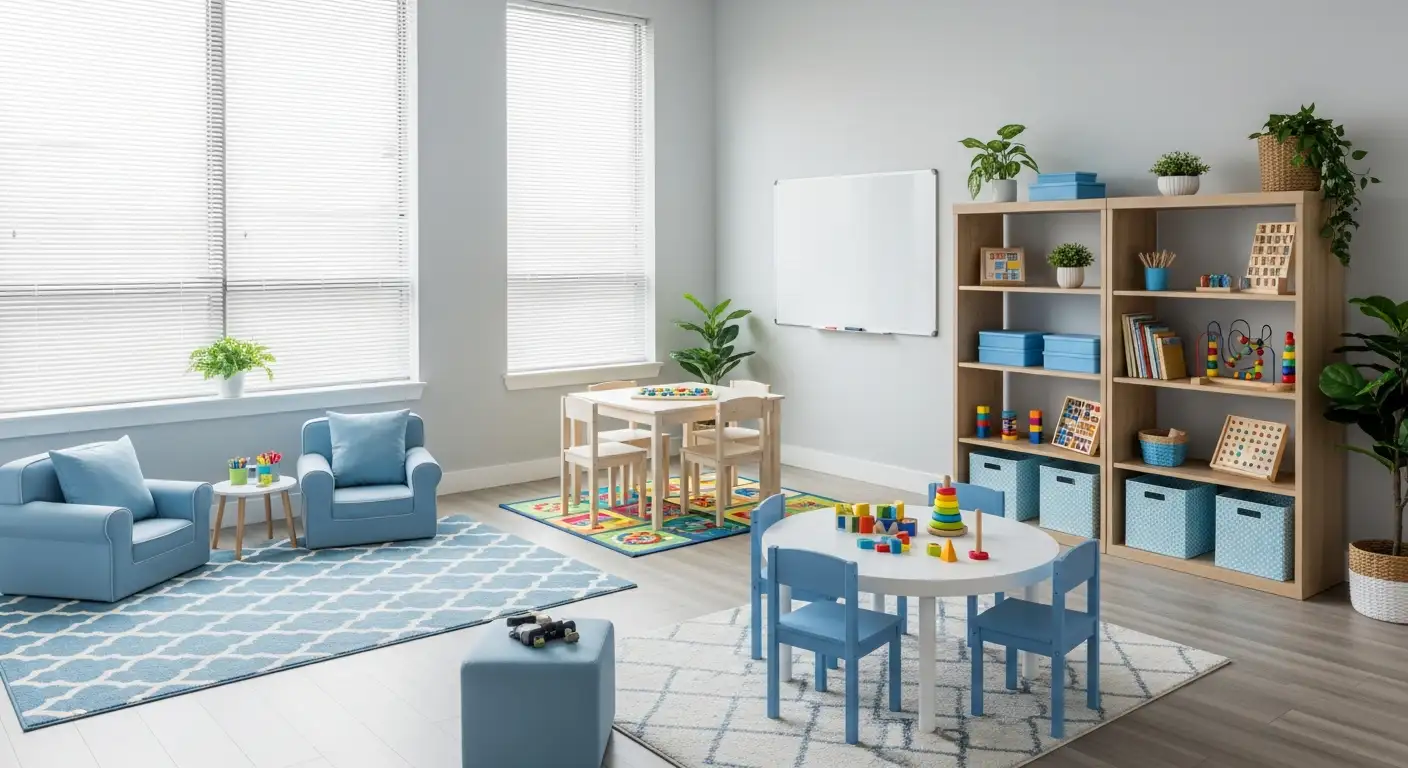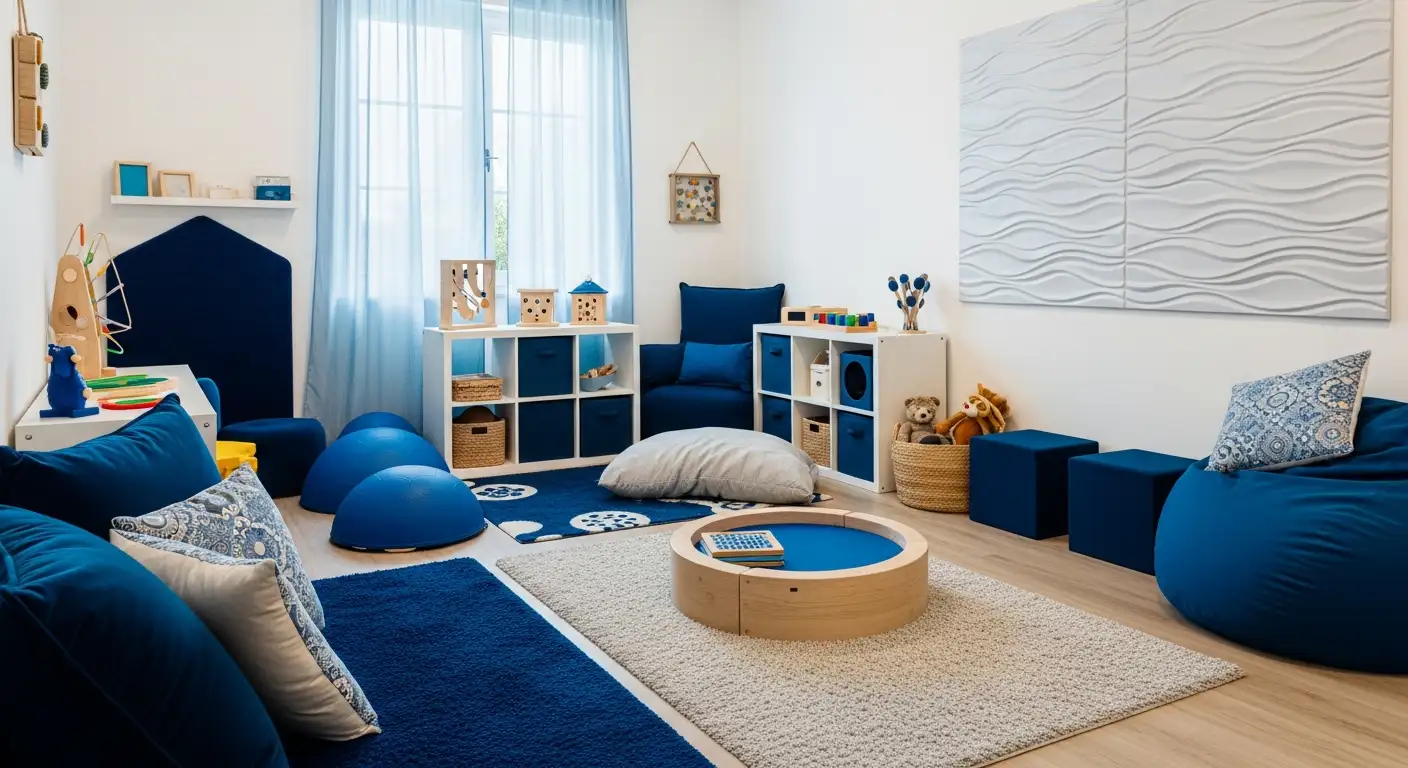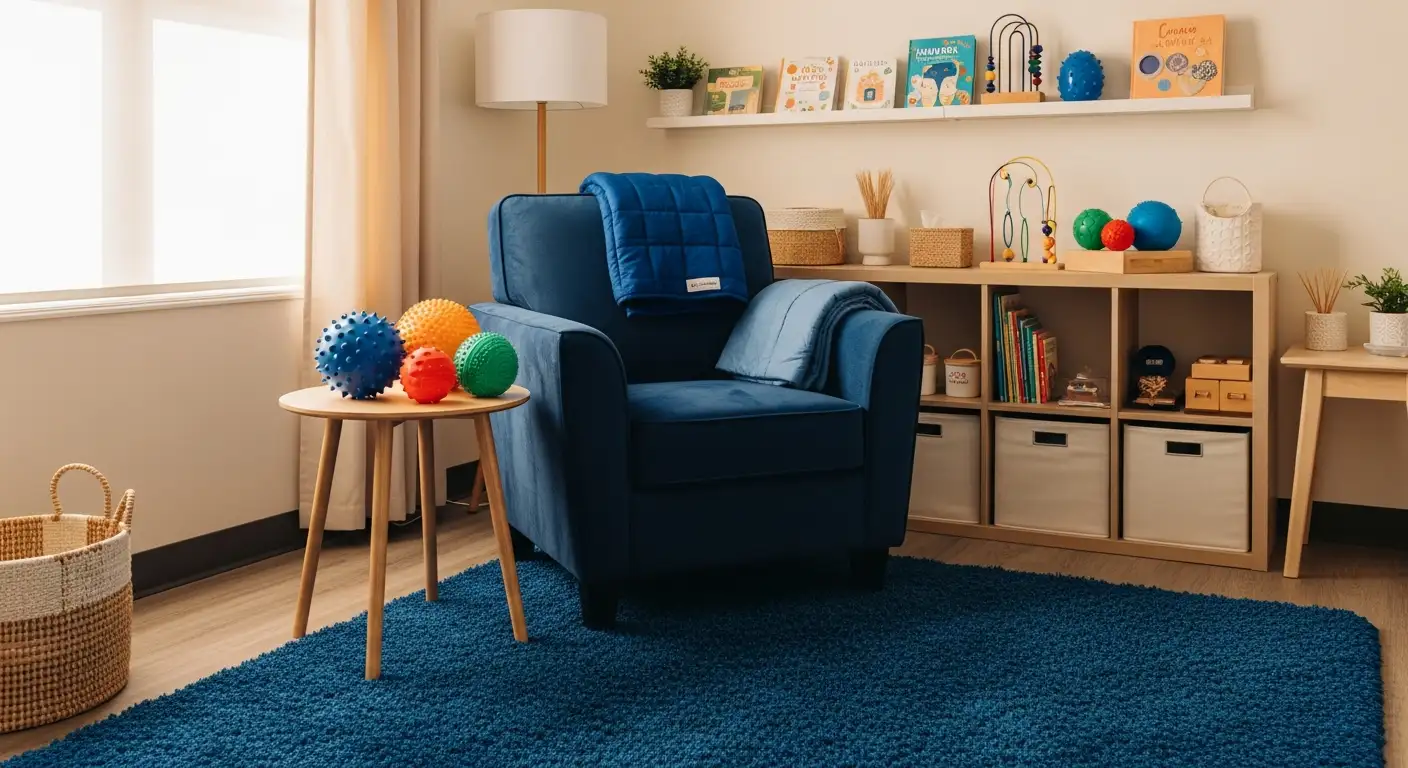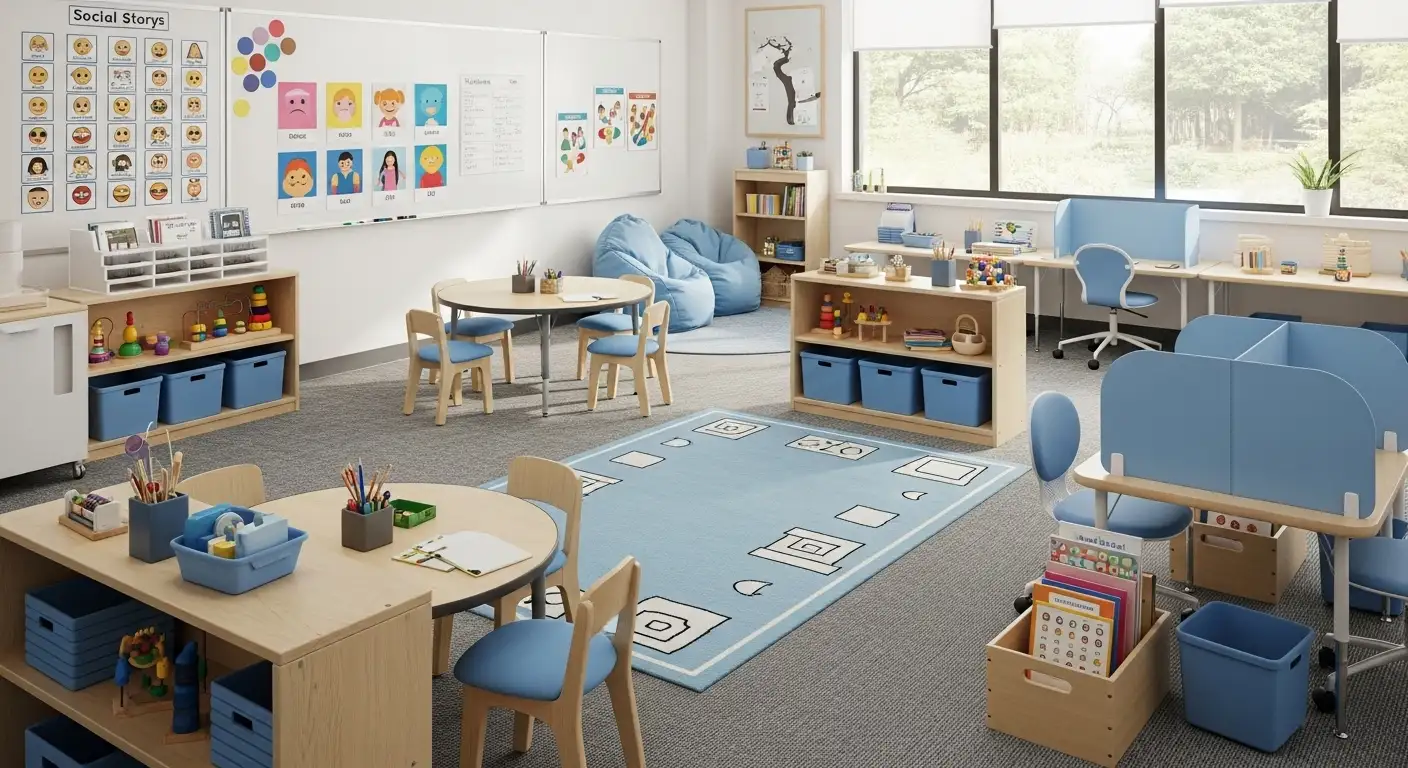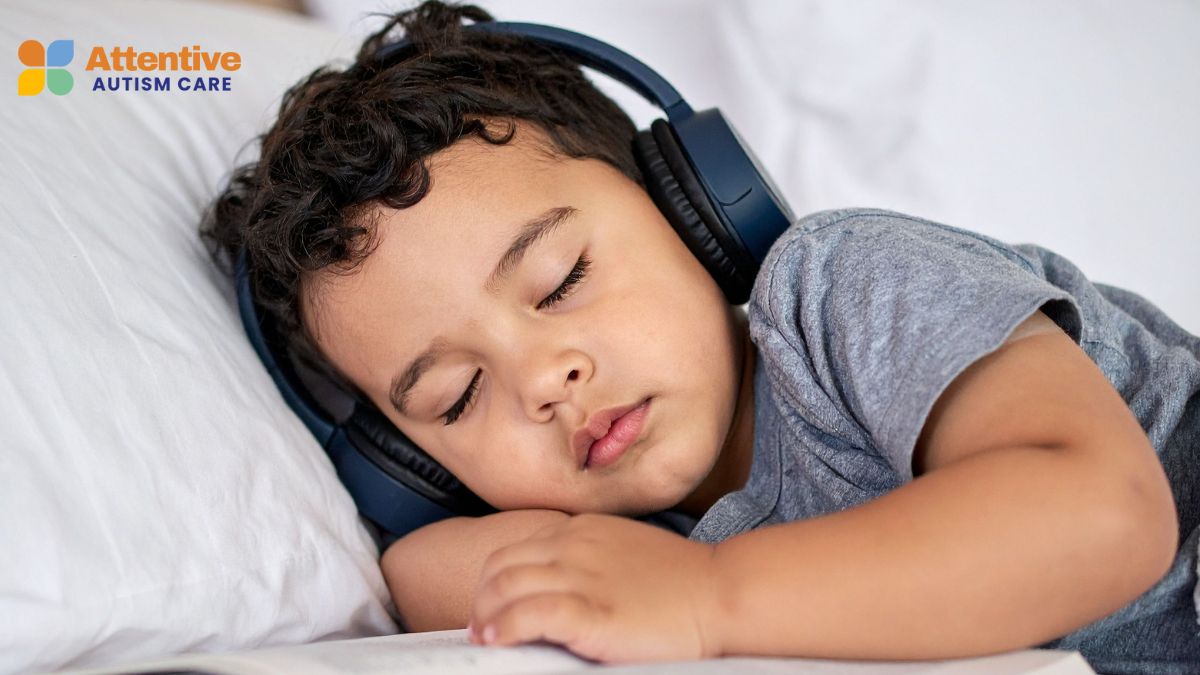Autism Apps For Children
Supporting Autism Development with Innovative Mobile Tools

Empowering Children on the Spectrum through Technology
In recent years, the development of specialized apps has transformed how parents, educators, and caregivers support children with Autism Spectrum Disorder (ASD). From fostering communication and social skills to managing routines and emotional regulation, autism apps serve as valuable tools that complement traditional therapies. This article explores the variety, features, and benefits of autism apps designed specifically for children, highlighting how these digital tools can enhance learning, independence, and social integration.
Top Autism Apps and Their Key Features

What are some of the top autism apps recommended for children, and what features do they offer?
When exploring tools to support children with autism, several apps stand out for their comprehensive features and tailored approaches. Among these, Proloquo2Go is widely recommended for its robust communication support, helping nonverbal children articulate their needs through an augmentative and alternative communication (AAC) platform.
Another popular app is Pictello, which allows caregivers and educators to create personalized social stories. These stories are essential for helping children understand social cues, routines, and expected behaviors, making everyday situations more predictable and manageable.
Apps like Zones of Regulation and ChoiceWorks provide visual schedules and activities designed to teach emotional regulation and routine management. These apps help children identify and express their feelings and develop coping strategies through structured, visual prompts.
Educational apps such as Daniel Tiger's Grr-ific Feelings and Touch and Learn - Emotions focus on teaching emotional recognition, social skills, and empathy. These tools aim to foster social understanding and improve interactions with peers.
Otsimo Special Education offers a broad range of content covering multiple developmental domains. Its customizable exercises address language, literacy, motor skills, and emotional understanding, making it a versatile resource.
Many apps integrate key features such as visual schedules, social scripts, behavior tracking, and personalized content. These functionalities are designed to support communication, social interaction, emotional regulation, and daily routines.
Choosing the most appropriate app depends on individual needs. Considerations should include the child's age, developmental level, learning preferences, and specific challenges. Collaborating with healthcare providers, such as speech therapists or occupational therapists, can help identify the most suitable tools.
Ultimately, well-chosen apps can enhance independence, facilitate skill development, and promote positive social interactions, serving as valuable complements to traditional therapies.
For further exploration, a search with the phrase "Top autism apps for children 2023 broadly review features and benefits" can provide the latest insights and reviews from expert sources.
| App Name | Main Features | Target Skills | Suitable Age Range |
|---|---|---|---|
| Proloquo2Go | AAC speech support | Communication | All ages, nonverbal children |
| Pictello | Customizable social stories | Social understanding | Preschool to elementary |
| Zones of Regulation | Emotional regulation activities | Emotional awareness | Early childhood to teens |
| Daniel Tiger's Feelings | Feelings recognition | Social skills | Preschool aged |
| Otsimo | Multi-domain therapy | Language, Motor, Emotional | Children with diverse needs |
| ChoiceWorks | Routine management | Daily routines, Behavior | Early childhood to school age |
When selecting autism apps, integration with other supports and individualization are important. Proper app use can significantly support a child's growth and confidence across various areas of development.
Routine Management Applications for Structure and Calming

What routine management apps can support children with autism?
Supporting children with autism in managing daily routines and transitions is essential for reducing anxiety and building independence. Several apps are designed specifically for this purpose. For example, ThruDay is an app that helps children and teens create and stick to routines, making daily activities more predictable and manageable. It encourages consistent habits and helps children navigate transitions smoothly.
Other popular apps include Routinely and Todoist. These tools assist in establishing and following daily routines by providing clear task lists and notifications. They enable parents and caregivers to set reminders for specific activities, which are delivered through alerts, helping children stay on schedule.
Visual timers, such as the Visual Timer app and Time Timer, are valuable resources for time management. They visually display the passage of time, offering concrete cues that help children understand how long an activity will last, thereby reducing stress and helping with transitions.
In addition to routine and time management tools, calming and stress reduction apps can be beneficial. Apps like Headspace, Breathe2Relax, and Miracle Modus offer mindfulness exercises, breathing techniques, and calming sounds. These applications help children manage overstimulation and anxiety, especially during stressful moments such as transitions or unfamiliar situations.
Together, these apps function as supplementary supports that promote structure, manage stress, and foster emotional regulation in children with autism. When integrated with daily routines, they provide a comprehensive approach to daily living that encourages independence and reduces behavioral challenges.
Free Communication Tools for Nonverbal Children

Are there any free autism apps available to help with communication for nonverbal individuals?
Yes, there are several no-cost options designed specifically to assist nonverbal children with autism in expressing themselves. These apps leverage customizable features, voice output, and user-friendly interfaces to support effective communication.
One prominent free AAC app is app2vox. It offers a comprehensive platform that allows users to build communication boards and utilize speech synthesis, giving nonverbal children a voice in a simple, accessible way.
Similarly, LetMeTalk is an entirely free app that enables the creation of personalized communication boards. Users can add symbols, photos, or text, facilitating tailored communication suited to each child's preferences and needs.
PictoBoard is another popular free resource. It allows the assembly of visual boards with symbols and images, supporting expressive language development and daily communication.
For those seeking additional free options, Avaz Lite and Grid Player offer valuable features. Avaz Lite provides symbol-based communication with text-to-speech capabilities, enabling children to form sentences and express themselves more clearly. Grid Player, on the other hand, displays visual grids that can be customized with symbols and supports speech output.
The common thread among these tools is their capacity to be personalized, making communication more effective and less frustrating for children with limited verbal skills. Features such as customizable vocabulary, intuitive navigation, and clear voice output are essential components that enhance their usefulness.
Choosing appropriate free apps can be a significant step toward fostering expressive independence in nonverbal children with autism. When selecting tools, it’s important to consider the child's specific abilities and preferences, and consulting with speech-language pathologists or special educators can help optimize the benefits.
Supporting nonverbal children with these accessible, budget-friendly apps not only promotes their ability to communicate but also strengthens their connection with caregivers and peers.
Supporting Families and Caregivers with Practical Applications

Are there any recommendations for apps or programs to help families and caregivers of children with autism?
Families and caregivers play a crucial role in supporting children with autism. Fortunately, a variety of apps and programs have been developed to assist with communication, routines, and behavior management, making daily life more manageable.
For communication support, apps like Proloquo2Go provide augmentative and alternative communication (AAC) tools that help nonverbal children express their needs and thoughts. Visual scheduling apps such as First Then Visual Schedule and ChoiceWorks assist in establishing predictable routines, reducing anxiety, and encouraging independence.
Behavior management can be supported by apps like ABA Flash Cards & Games and Social Stories Creator & Library, which promote social skills and emotional understanding.
Sleep routines are also important, and apps like White Noise, SleepBot, and Go To Bed can help children develop healthy sleep habits, which are essential for overall well-being.
In addition to targeted apps, many online resources offer free or low-cost materials tailored for families and caregivers. The Vanderbilt Kennedy Center and Waterford.org provide social stories, virtual flashcards, and interactive activities designed to support learning and behavioral skills.
It's essential for families to incorporate these tools thoughtfully into their child's daily routines. Working closely with therapists and educators ensures that app usage aligns with individual goals and treatment strategies.
Tracking progress through data collection within these apps can help identify what strategies are most effective. Regular communication with professionals can optimize outcomes and ensure that the use of technology complements other interventions.
Resources for sleep support and stress reduction
Effective sleep management can reduce stress for both children and their caregivers. Using apps like White Noise and SleepBot creates a calming environment conducive to sleep. Establishing a consistent bedtime routine with visual timers can also help improve sleep patterns.
For stress reduction, sensory apps such as Fluidity HD and Melody Maker offer calming experiences, helping children self-regulate during overwhelmed moments. These tools are valuable for providing sensory breaks and easing anxieties.
Additional resources include online support groups and educational websites offering coping strategies, relaxation techniques, and peer support. These platforms often include forums, expert advice, and downloadable materials tailored for families managing autism-related challenges.
Importance of integrating technology with treatment plans
While technology offers many benefits, it should not replace human interaction but rather serve as a supplementary tool within a comprehensive treatment plan. Collaborating with healthcare professionals ensures that app selection aligns with the child's unique needs and developmental goals.
Programs like ABA therapy, speech therapy, and occupational therapy can be integrated with app-based activities to reinforce learning and behavioral strategies.
Regular monitoring and assessment of app effectiveness are vital. Setting clear, measurable goals helps determine whether the technology supports skill development or requires adjustments.
Ultimately, a balanced approach that combines technological tools with traditional interventions fosters an environment where children with autism can thrive, develop essential skills, and build independence.
Fostering Social Skills via Specialized Apps

How can social skills be supported through apps for children with autism?
Supporting social skills in children with autism can be significantly enhanced with the help of specialized apps designed to teach emotional recognition, social cues, and effective communication. These digital tools offer interactive and engaging ways to practice social interactions in a safe, controlled environment.
Many curated apps target emotional intelligence and social understanding. For instance, Avokiddo Emotions and Touch and Learn - Emotions use visuals and activities that help children identify and understand different feelings. Model Me Going Places 2 simulates real-life social settings, allowing children to practice appropriate behaviors in diverse situations.
Virtual scenarios embedded in these apps make social practice accessible and less intimidating. Children can learn how to greet others, share, wait their turn, and interpret social cues through engaging storylines and role-playing features.
Evidence-based options are available to promote social competence and self-regulation. Apps like Social Success and Zones of Regulation incorporate structured lessons that teach children strategies to manage emotions, handle conflicts, and develop self-awareness. These apps often include visual supports, social stories, and activities that mirror real-world interactions.
Tools such as Autism Behavior Toolbox provide additional strategies for various social situations, such as making friends, managing peer interactions, and coping with bullying. They often enable caregivers and educators to share strategies and monitor progress, fostering consistency across home and school environments.
Another approach involves apps that focus on behavioral regulation and social understanding through visual cues, like Social Stories and social scripts within apps like Pictello. These resources clarify expectations for specific social encounters, making learning more concrete.
Regular updates and expert input are crucial for maintaining the relevance and effectiveness of these apps. Many are developed with input from speech-language pathologists, occupational therapists, and educators, ensuring they are tailored to meet individual needs.
The inclusion of multitiered supports—such as videos, visual supports, and real-world practice—maximizes learning outcomes. Overall, these apps serve as valuable tools to nurture social skills, fostering greater independence and social integration for children on the autism spectrum.
Harnessing Technology to Break Barriers and Build Abilities
The array of autism apps available today offers a wealth of opportunities for children with ASD to learn, communicate, and develop essential life skills. By carefully selecting and integrating these digital resources with professional guidance, families and educators can create more inclusive, engaging, and effective learning environments. As technology continues to evolve, so will the possibilities for supporting children on the spectrum—empowering them to reach their full potential and lead more fulfilling lives.
References
- Helpful Apps and Websites - Autism Spectrum Disorders Clinic
- Kids Autism Games - AutiSpark on the App Store - Apple
- Autism apps | Healthify
- Best Apps for Kids with Autism | Common Sense Education
- Apps for Children with Autism and Aspergers - Reading Rockets
- Educational apps for autistic children and teenagers
- Exploring the Best Apps for Children with Autism
- 20 Best Apps for Kids With Autism (+ Parents) in 2025 - WizCase










